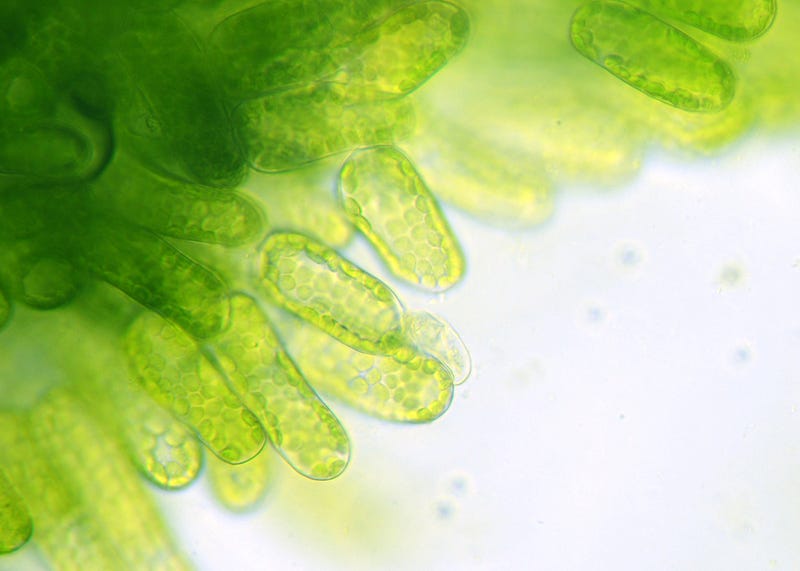Harnessing Fungi for Sustainable Agriculture: A New Approach
Written on
Chapter 1: The Role of Fungi in Agriculture
The increasing global population places significant demands on our environment, primarily due to the need for sufficient food supply. This necessitates that the agricultural sector boost food production. With limited land available, modern farming practices aim to maximize crop yield and quality while minimizing land usage.
A prevalent method to achieve higher yields is through the application of pesticides, herbicides, and synthetic fertilizers. However, this approach is unsustainable as it can harm ecosystems and pose health risks to humans. Residual chemicals from crops, including fruits, grains, and vegetables, can lead to various health issues, such as Parkinson’s disease, respiratory complications, reproductive disorders, and cancer. This underscores the need for farming techniques that are both environmentally friendly and safe for human health.
One promising solution is the use of microorganisms, such as endophytic fungi, as alternatives to synthetic chemicals for enhancing plant growth. These fungi inhabit plant tissues, including leaves, fruits, stems, and flowers, forming a symbiotic relationship with the host plants. In this mutually beneficial relationship, plants provide fungi with shelter and nutrients, while fungi offer several advantages to plants.

1. Enhancing Nutrient Absorption
Endophytic fungi aid in the efficient uptake of both macronutrients (like phosphorus, nitrogen, potassium, and magnesium) and micronutrients (such as zinc, iron, and copper). These fungi help plants to store phosphorus from the soil in their tissues. Moreover, special molecules known as siderophores in these fungi can bind iron to the plant's root surface, making it accessible. Additionally, endophytic fungi can extract nitrogen from insects they infect and kill, transferring it to the plant.
Consequently, these fungi significantly reduce the need for chemical fertilizers, enabling plants to thrive with the nutrients they provide.
Farming with Fungi | Soil Food Web - YouTube
This video delves into the intricate relationship between fungi and soil health, showcasing how these microorganisms can bolster agricultural practices.
2. Producing Essential Plant Hormones
Endophytic fungi contribute to plant health by generating phytohormones, which are vital for growth, development, reproduction, and adaptation to environmental changes. Certain species produce hormones like gibberellin, crucial for seed germination and stem growth, while others produce auxins, which promote elongation of plant cells and regulate growth. By introducing these fungi into seeds, plants exhibit improved growth and increased biomass in both shoots and roots.
Thus, the presence of endophytic fungi diminishes the reliance on chemical fertilizers, as the hormones they supply facilitate robust plant development.

3. Strengthening Plant Defense Mechanisms
Endophytic fungi enhance plants' self-defense systems, providing protection against pathogens and pests. Similar to vaccines in humans, these fungi help plants build resistance to harmful organisms, leading to the development of thicker cell walls that make it more difficult for invaders to penetrate.
As a result, the use of chemical pesticides and insecticides may be significantly reduced, as plants become more resilient through natural means.
4. Guarding Against Pests and Pathogens
These fungi also offer protection against pests and disease-causing organisms by producing various antibiotics, as well as antiviral, antibacterial, and antifungal compounds. For instance, certain alkaloids generated by endophytic fungi can accumulate in plants and deter insect pests.
By using endophytic fungi, farmers can minimize their dependence on synthetic pesticides and insecticides, as these natural agents provide effective plant protection.
5. Mitigating Biotic and Abiotic Stress
Endophytic fungi assist plants in coping with both biotic stress (caused by living organisms) and abiotic stress (arising from environmental conditions). They enhance plant resilience through various mechanisms, including competition for resources and modifying the structure of plant cell walls.
By improving tolerance to stressful conditions, such as drought and high salinity, endophytic fungi help plants maintain their health and productivity without relying on chemical interventions.

Conclusion
In summary, endophytic fungi provide numerous benefits to plants, including improved nutrient uptake, hormone production, enhanced defenses, pest protection, and stress mitigation. These advantages highlight the potential of fungi in fostering sustainable agricultural practices.
How We Can Contribute
Here are a few actionable steps we can take to leverage the benefits of endophytic fungi in agriculture:
- Opt for fungi-based biofertilizers instead of synthetic options.
- Minimize the use of chemical fertilizers and pesticides.
Do you have additional suggestions on how to support the use of endophytic fungi? Please share your ideas in the comments to inspire others.
Agriculture Reading List
Fungi and the Future of Farming | Farming with Fungi Part 2 - YouTube
This video explores the future applications of fungi in agriculture, emphasizing their role in sustainable farming practices.
Credit
This article is inspired by the research conducted by Baron, N. C., & Rigobelo, E. C. (2022). "Endophytic fungi: a tool for plant growth promotion and sustainable agriculture." Mycology, 13(1), 39–55.